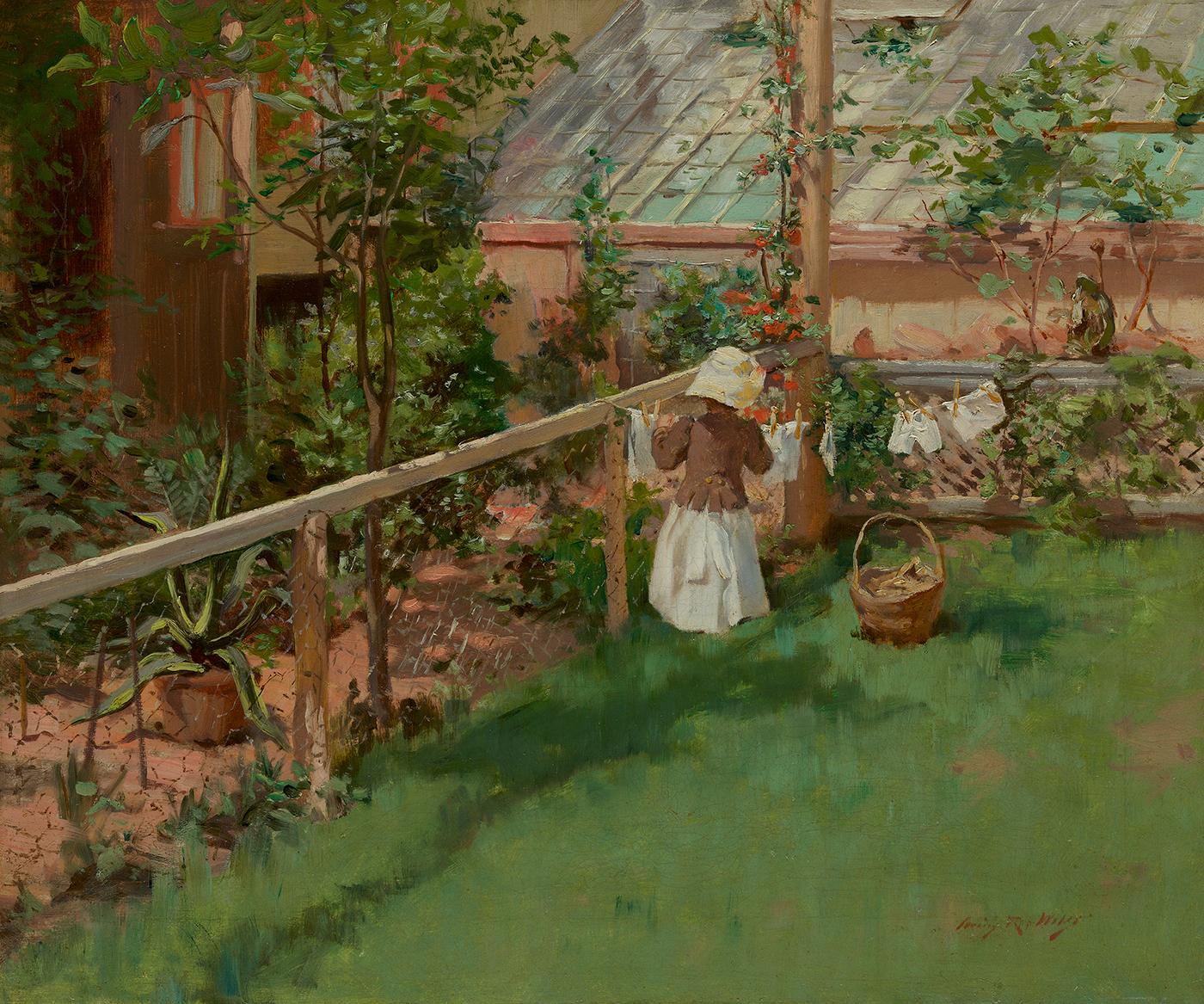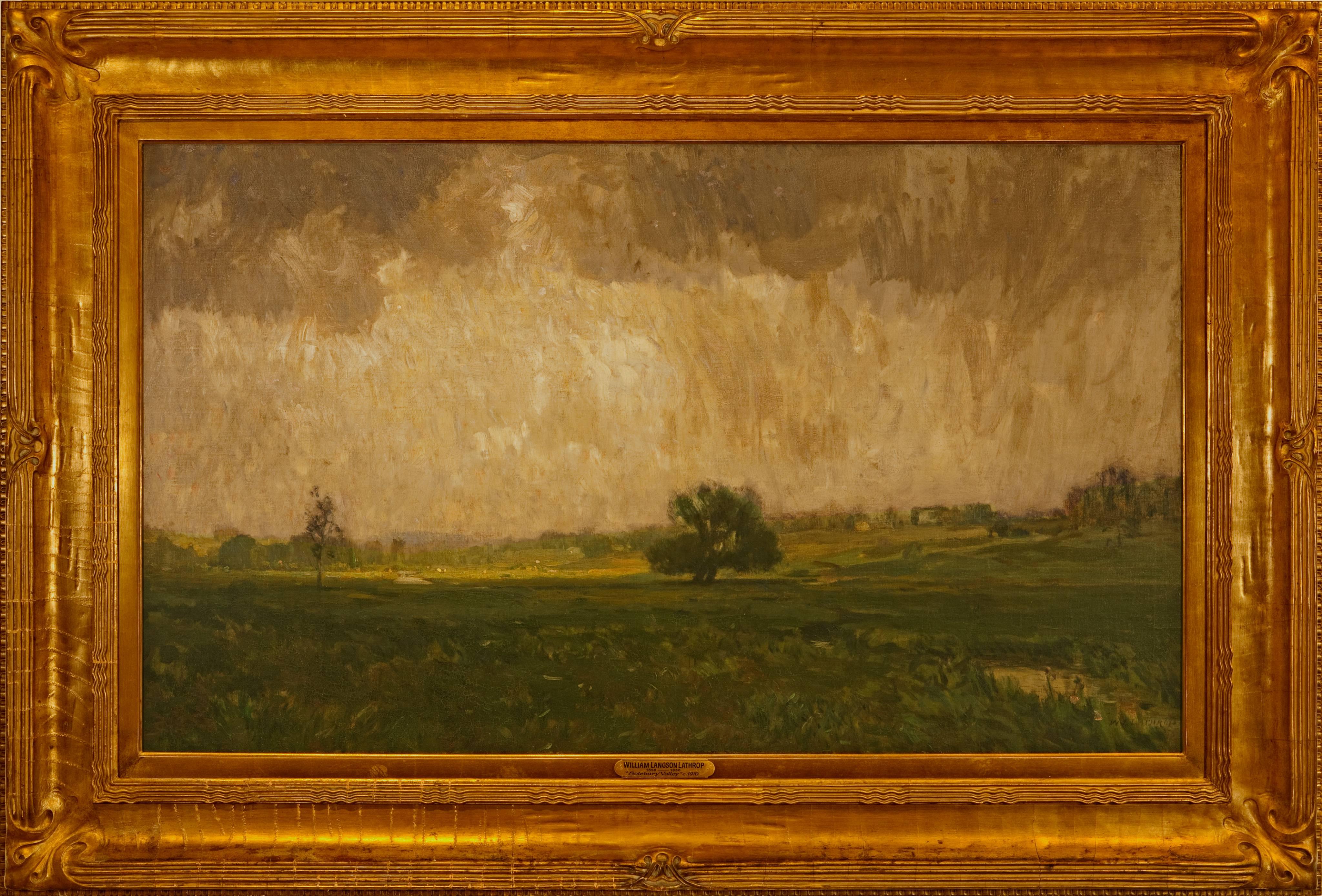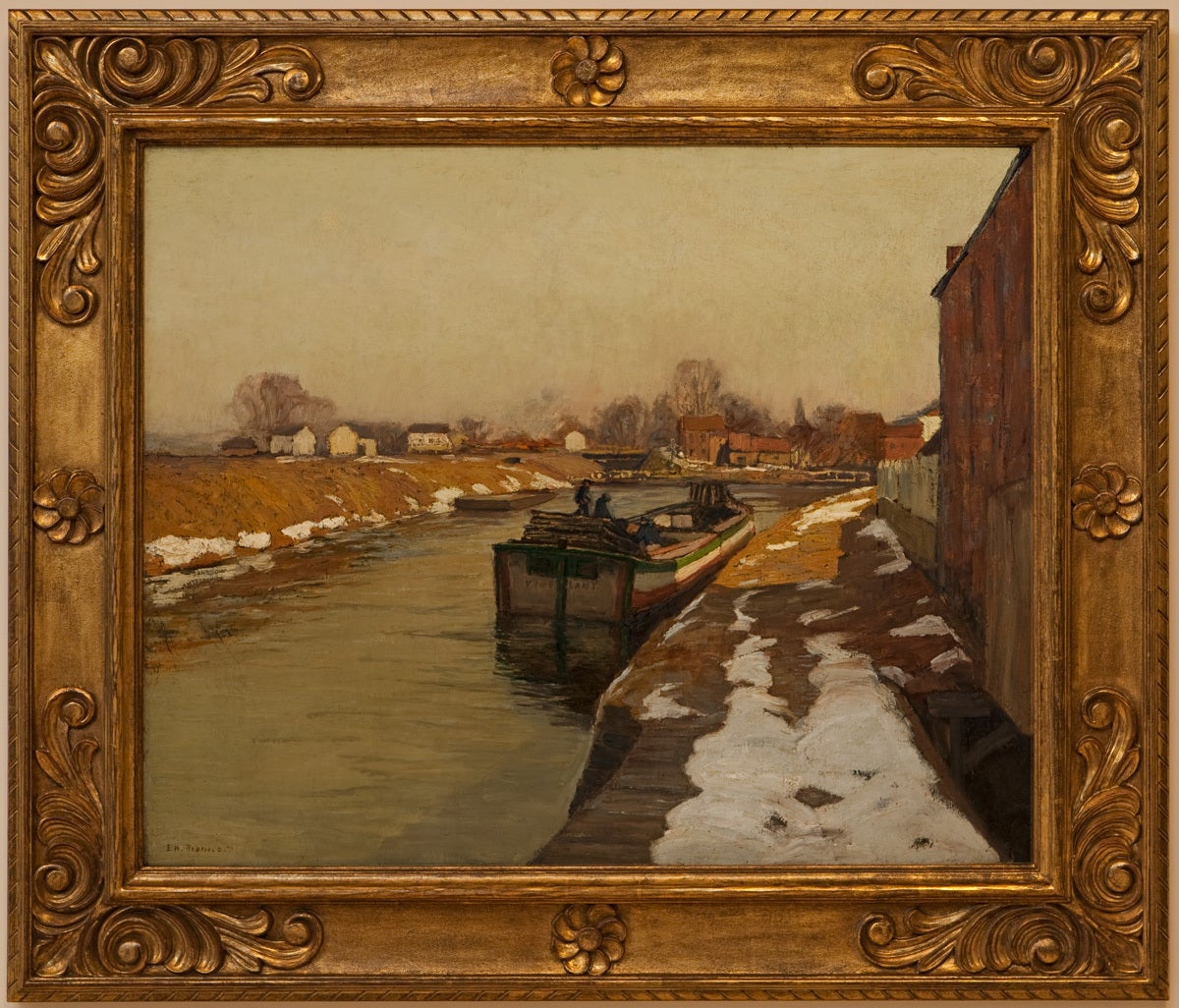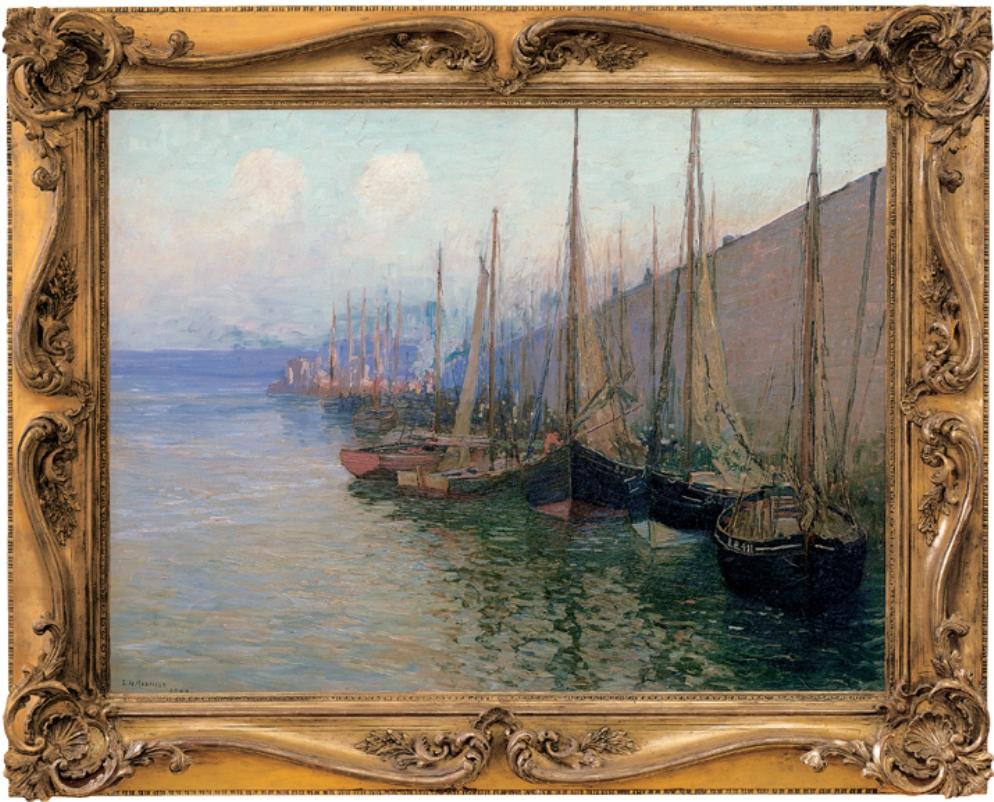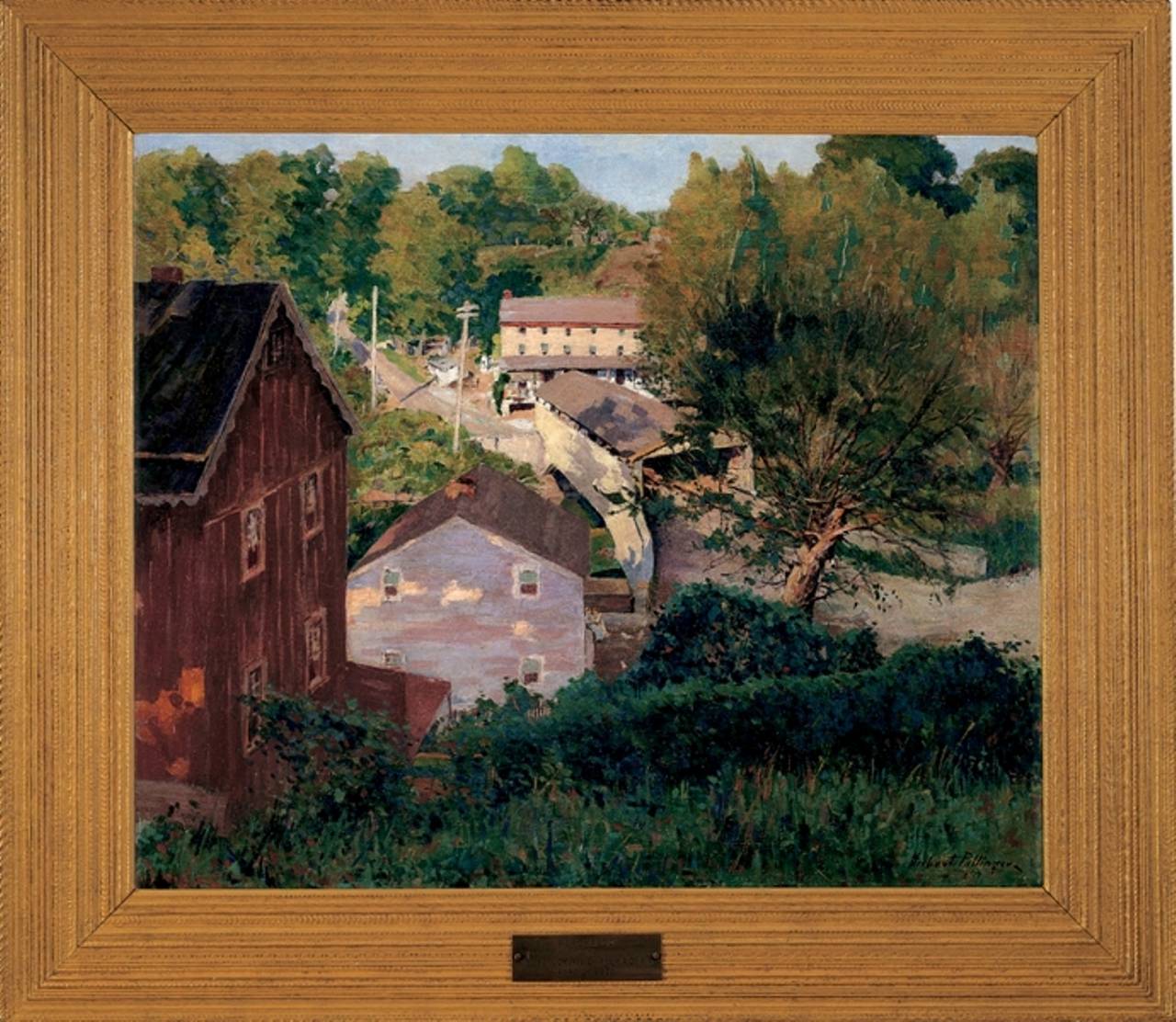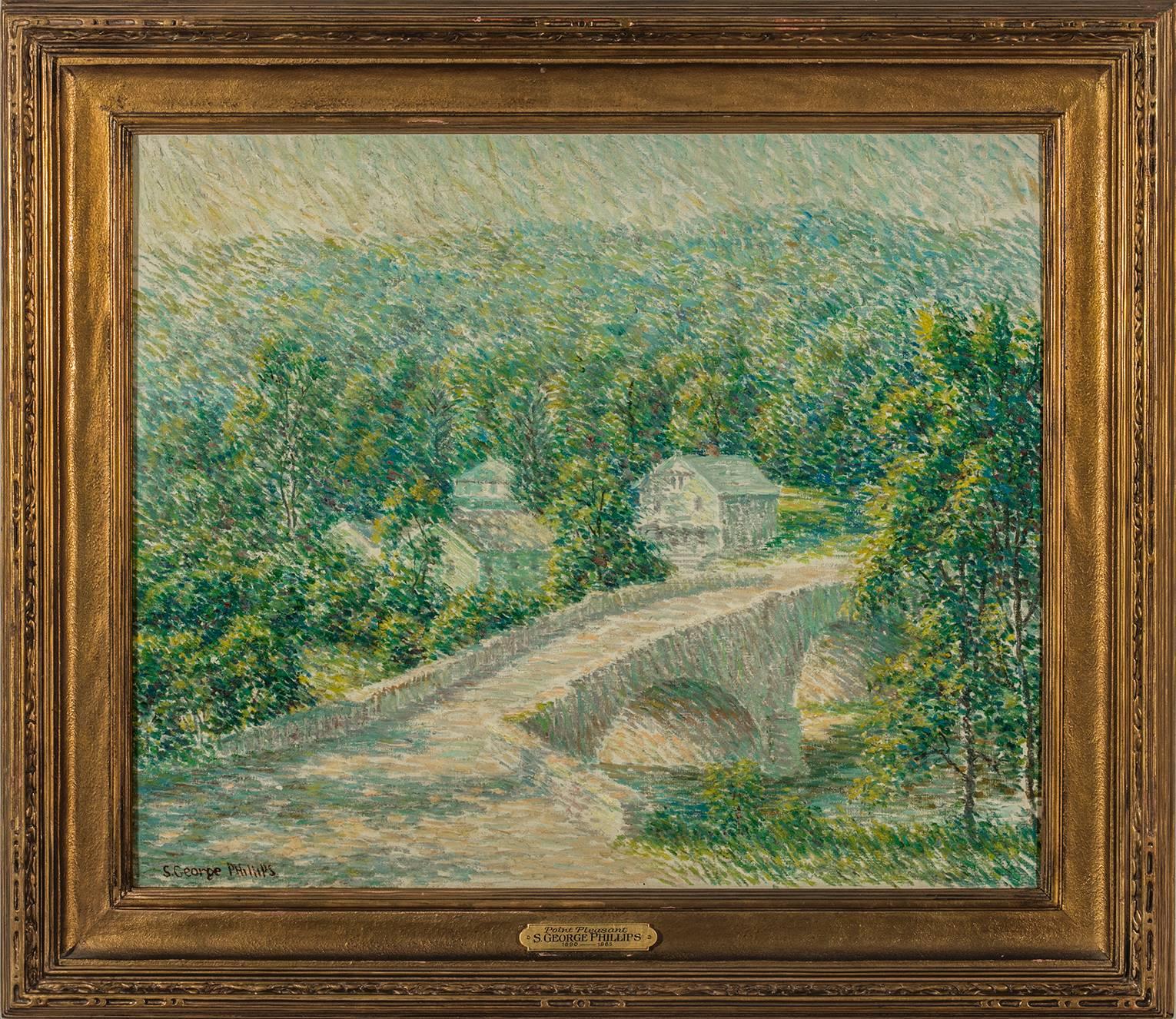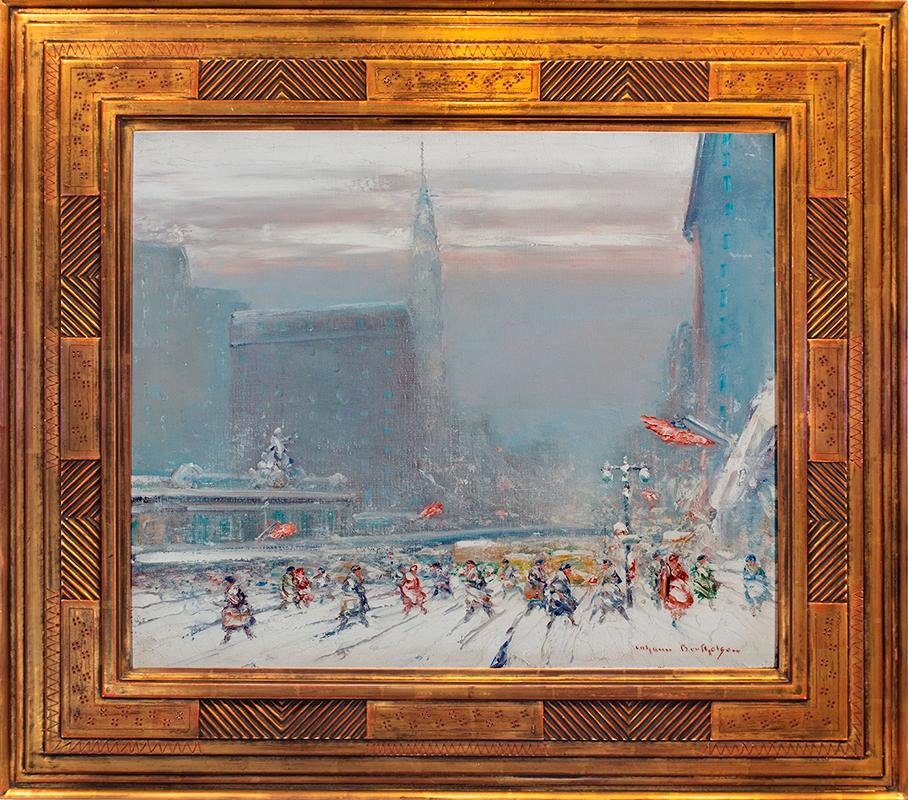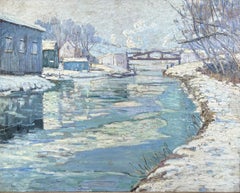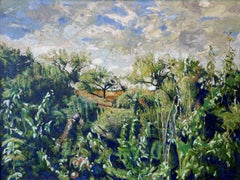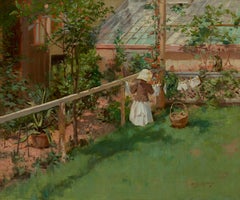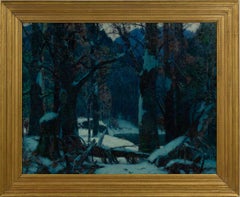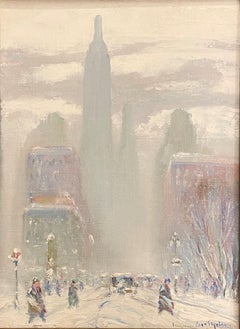
"5th Avenue (Empire State Building), " Johann Berthelsen, New York City in Winter
View Similar Items
Want more images or videos?
Request additional images or videos from the seller
1 of 9
Johann Berthelsen, 1883-1972"5th Avenue (Empire State Building), " Johann Berthelsen, New York City in Winter
About the Item
- Creator:Johann Berthelsen, 1883-1972 (1883 - 1972, American)
- Dimensions:Height: 22.25 in (56.52 cm)Width: 18.25 in (46.36 cm)
- Medium:
- Movement & Style:
- Period:
- Condition:
- Gallery Location:New York, NY
- Reference Number:1stDibs: LU184129924382
Johann Berthelsen, 1883-1972
Johann Berthelsen was born in Copenhagen, Denmark, on July 25, 1883. He was a member of the Salmagundi Club, American Watercolor Society, and Allied Artists of America. He exhibited widely and was the recipient of numerous awards including the Erskine Prize in 1928 in Chicago and 1946, in Indianapolis, the Holcombe M. Austin Prize. Known for his scenes of city streets in New York, he usually did paintings in pairs and is best known for his New York winter scenes.
About the Seller
5.0
Platinum Seller
These expertly vetted sellers are 1stDibs' most experienced sellers and are rated highest by our customers.
Established in 2021
1stDibs seller since 2022
61 sales on 1stDibs
Typical response time: 1 hour
More From This SellerView All
- "Woman in a Forest Glade" Robert Lewis Reid, American Impressionist, French LadyBy Robert ReidLocated in New York, NYRobert Lewis Reid Woman in a Forest Glade Oil on canvas 36 x 27 inches Provenance: Petersen Galleries, Beverly Hills, California Hirschl & Adler Gal...Category
Late 19th Century American Impressionist Figurative Paintings
MaterialsCanvas, Oil
- "Winter Scene: Canal Near New Hope, Pennsylvania" Impressionist Snowy LandscapeBy George Gardner SymonsLocated in New York, NYGeorge Gardner Symons Winter Scene: Canal Near New Hope, Pennsylvania Signed lower left Oil on canvas 30 x 38 inches Provenance: Galleries Maurice Sternberg, Chicago, Illinois Private Collection Sotheby Parke Bernet, New York, American 19th & 20th Century Paintings, 1976, Lot 121 Christie's New York, American Art, June 5, 1997, Lot 66 The Honorable Serena Perretti, Short Hills, New Jersey (acquired directly from the above) Estate of the above, 2023 A landscape and marine artist, George Symons was one of America's more noted plein-air painters who combined styles of impressionism and realism. His works are cited for their energy and simplicity, and he often did panoramic views. He was born in Chicago, Illinois in 1861, with the name of George Gardner Simon, but he changed his last name to Symons when he returned from study in England because of concern about anti-semitism. Not much is known about his early life. He first studied at the Chicago Art Institute where he became a close, life-long friend of William Wendt. They painted together in California and then in Cornwall, England in 1898. He also studied in Paris, and Munich and London, and joining a colony of artists at St. Ives, adopted the plein-air techniques of Julius Olsson, Adrian Stokes, and Rudolph Hellwag. He worked in Chicago as a commercial artist, and about 1903 returned to California with Wendt and built a studio in Laguna Beach and became active in western art societies including the California Art Club. He returned often, but maintained his primary studio in Brooklyn, New York, and also did a lot of painting in Colerain, Massachusetts. Among the collections where his work can be found is the Brooklyn Institute of Arts and Sciences; the Art Institute of Chicago, and the Fleischer Museum in Scottsdale, Arizona. Associations he was a member of include the National Academy of Design, the National Arts Club, the Institute of Arts and Letters, the Lotos, Century, and Salmagundi Clubs. He was also a member of the Royal Society of British Artists and the Union Internationale des Beaux Arts et des Lettres. He painted entirely out-of-doors, frequently working in Arizona, doing desert landscape and the Grand Canyon views, which "were well received", but he is best known for his New England snow scenes, especially of the Berkshire Mountains...Category
Early 20th Century American Impressionist Landscape Paintings
MaterialsOil, Canvas
- "Milkweeds in Maine" Anne Carleton, Female American Impressionist LandscapeBy Anne CarletonLocated in New York, NYAnne Carleton Milkweeds in Maine Signed lower right Oil on canvas 37 x 48 1/2 inches ANNE CARLETON was born in Atkinson, New Hampshire in 1878 and was educated at the Mass Normal Ar...Category
Mid-20th Century American Impressionist Landscape Paintings
MaterialsOil, Canvas
- "Mountain Village in Winter" Anthony Thieme, Snowy LandscapeBy Anthony ThiemeLocated in New York, NYAnthony Thieme Mountain Village in Winter Signed lower left Oil on canvas 25 x 30 inches Anthony Thieme was born in the Dutch port city of Rotterdam in 1888. He studied at the Acade...Category
Early 20th Century American Impressionist Landscape Paintings
MaterialsOil, Canvas
- "Trinity Church, Boston" Arthur Clifton Goodwin, Impressionism, Snowy WinterBy Arthur Clifton GoodwinLocated in New York, NYArthur Clifton Goodwin Trinity Church, Boston, 1928 Signed lower left Oil on canvas 30 x 36 inches Provenance: Sotheby’s New York, American Art, May 24, 1990, Lot 166 Private Collec...Category
1920s American Impressionist Landscape Paintings
MaterialsCanvas, Oil
- "Washington Square Park" Marion Eldridge, Female Artist, New York CityscapeLocated in New York, NYMarion Eldridge Washington Square Park, circa 1925-30 Signed lower right Oil on canvas 18 x 22 inchesCategory
1920s American Impressionist Landscape Paintings
MaterialsCanvas, Oil
You May Also Like
- At the ClotheslineBy Irving Ramsey WilesLocated in New York, NYSigned lower right: Irving R. WilesCategory
Late 19th Century American Impressionist Landscape Paintings
MaterialsCanvas, Oil
- "Alley Fiends"By John R. GrabachLocated in Lambertville, NJJim’s of Lambertville is proud to offer this artwork by: John R. Grabach (1886 - 1981) John Grabach was a highly regarded New Jersey artist, teacher, and author of the classic text...Category
1930s American Impressionist Landscape Paintings
MaterialsCanvas, Oil
- "Forest Strongholds"By John F. CarlsonLocated in Lambertville, NJSigned lower right. Complemented by a hand carved and gilt frame. Exhibited at the National Academy of Design, 1928Category
20th Century American Impressionist Landscape Paintings
MaterialsCanvas, Oil
- "Solebury Valley"By William Langson LathropLocated in Lambertville, NJSigned lower right. Complemented by a period frame. William L. Lathrop (1859-1938) Deemed “Father of the New Hope Art Colony”, William Langson Lathrop was born in Warren, Illinois. He was largely self-taught, having only studied briefly with William Merritt Chase in 1887, at the Art Students League. Lathrop first moved east in the early 1880s, and took a job at the Photoengraving Company in New York City. While there, he befriended a fellow employee, Henry B. Snell. The two men became lifelong friends and ultimately, both would be considered central figures among the New Hope Art Colony. Lathrop's early years as an artist were ones of continuing struggle. His efforts to break through in the New York art scene seemed futile, so he scraped enough money together to travel to Europe with Henry Snell in1888. There he met and married an English girl, Annie Burt. Upon returning to New York, he tried his hand at etching, making tools from old saw blades...Category
1910s American Impressionist Landscape Paintings
MaterialsCanvas, Oil
- Winter MoonlightBy George William SotterLocated in Lambertville, NJsigned lower rightCategory
1910s American Impressionist Landscape Paintings
MaterialsCanvas, Oil
- "The Canal"By Edward Willis RedfieldLocated in Lambertville, NJJim’s of Lambertville is proud to offer this artwork. Signed lower left. Complemented by a hand carved and gilt frame. Illustrated in "Edward Redfield: Just Values and Fine Seeing" by Constance Kimmerle and the Pennsylvania Academy of the Fine Arts's Exhibition of Paintings by Edward Redfield (April 17 to May 16, 1909) brochure Edward Willis Redfield (1869 - 1965) Edward W. Redfield was born in Bridgeville, Delaware, moving to Philadelphia as a young child. Determined to be an artist from an early age, he studied at the Spring Garden Institute and the Franklin Institute before entering the Pennsylvania Academy from 1887 to 1889, where he studied under Thomas Anshutz, James Kelly, and Thomas Hovenden. Along with his friend and fellow artist, Robert Henri, he traveled abroad in 1889 and studied at the Academie Julian in Paris under William Bouguereau and Tony Robert-Fleury. While in France, Redfield met Elise Deligant, the daughter of an innkeeper, and married in London in 1893. Upon his return to the United States, Redfield and his wife settled in Glenside, Pennsylvania. He remained there until 1898, at which time he moved his family to Center Bridge, a town several miles north of New Hope along the Delaware River. Redfield painted prolifically in the 1890s but it was not until the beginning of the twentieth century that he would develop the bold impressionist style that defined his career. As Redfield’s international reputation spread, many young artists gravitated to New Hope as he was a great inspiration and an iconic role model. Edward Redfield remained in Center Bridge throughout his long life, fathering his six children there. Around 1905 and 1906, Redfield’s style was coming into its own, employing thick vigorous brush strokes tightly woven and layered with a multitude of colors. These large plein-air canvases define the essence of Pennsylvania Impressionism. By 1907, Redfield had perfected his craft and, from this point forward, was creating some of his finest work. Redfield would once again return to France where he painted a small but important body of work between 1907 and 1908. While there, he received an Honorable Mention from the Paris Salon for one of these canvases. In 1910 he was awarded a Gold Medal at the prestigious Buenos Aires Exposition and at the Panama-Pacific Exposition of 1915 in San Francisco, an entire gallery was dedicated for twenty-one of his paintings. Since Redfield painted for Exhibition with the intent to win medals, his best effort often went into his larger paintings. Although he also painted many fine smaller pictures, virtually all of his works were of major award-winning canvas sizes of 38x50 or 50x56 inches. If one were to assign a period of Redfield’s work that was representative of his “best period”, it would have to be from 1907 to 1925. Although he was capable of creating masterpieces though the late 1940s, his style fully matured by 1907 and most work from then through the early twenties was of consistently high quality. In the later 1920s and through the 1930s and 1940s, he was like most other great artists, creating some paintings that were superb examples and others that were of more ordinary quality. Redfield earned an international reputation at a young age, known for accurately recording nature with his canvases and painting virtually all of his work outdoors; Redfield was one of a rare breed. He was regarded as the pioneer of impressionist winter landscape painting in America, having few if any equals. Redfield spent summers in Maine, first at Boothbay Harbor and beginning in the 1920s, on Monhegan Island. There he painted colorful marine and coastal scenes as well as the island’s landscape and fishing shacks. He remained active painting and making Windsor style furniture...Category
Early 1900s American Impressionist Landscape Paintings
MaterialsCanvas, Oil
Recently Viewed
View AllMore Ways To Browse
50s Vintage Family Portrait
1940s Bureau
Winter Song
Star Burst Mid Century
Avenue Road
Seven Sisters Vintage
Star Burst Light
Empire State Light
Star Wars Collectibles Vintage
Star Wars Collectables Vintage
Star Wars Vintage Collectibles
Empire State Building Painting
Painted Vintage Bureau
Gilbert Sullivan
Gilbert And Sullivan
President Adams
Vintage Canada Art Collectibles
Gilbert Young
